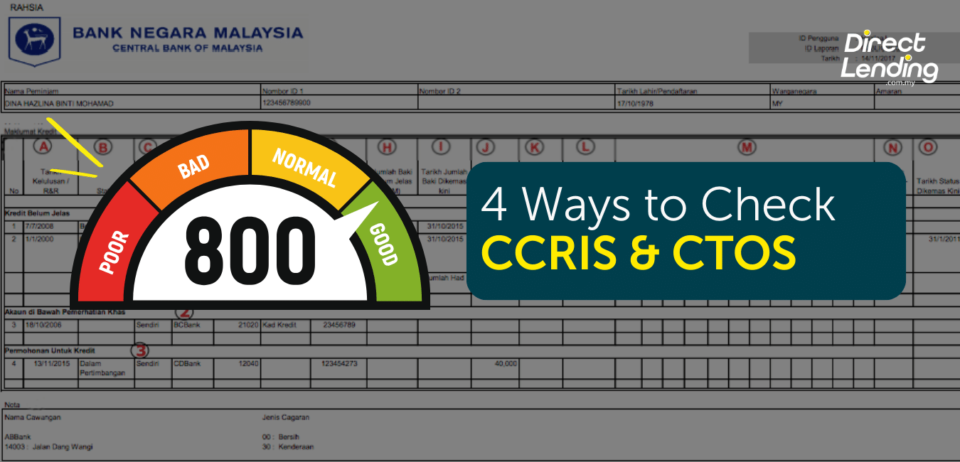By Sera
Marketing
12 Steps to Achieve Your Financial Goals 2024

The past two years have been extremely challenging to many as we are still combating the spread of the COVID-19 virus. This unprecedented situation has driven many of us to financial difficulties, but to look from the bright side, we are now more aware than ever of the importance of financial management. Smart financial planning will allow us to be on top of our budgets, make room for savings, and prevent unnecessary spending, all of which are some of the steps to achieving financial freedom.
Table of contents
Since we have just entered 2022, it is not too late to start making new financial goals if you haven’t. If you have, congratulations on taking that first step! We hope that this article is useful if you are making a new financial resolution or if you are looking for ways to stay consistent with your plans to achieve your 2022 financial goals.

1. Set Your Financial Goals
Start by determining both short term and long term financial goals. A short term goal is usually attainable within a month or a year, while a long term goal may take five years or more to achieve (usually ones involving saving or investment plans).
Some example of short term goals are building an emergency fund, repaying credit card debts or saving for a wedding. Long term goals may be building a retirement fund, repaying mortgage, or to achieve total financial freedom.
A good goal is one that follows the SMART characteristics:
Specific – What exactly is that you want to achieve? Try breaking your goals down to small actions or a to-do list.
Measurable – Can you measure whether or not you have attained the goal? If you have made a to-do list, will ticking them one-by-one lead you to achieving the goal?
Achievable – Is the goal realistic or too vague? This is why it is important to list down specific actions that you can take to achieve the goal.
Relevant – Will the goal really benefit you? Are you capable of achieving the goal this year? You should select financial goals that can work with your existing commitments or financial situation.
Relevant – Will the goal really benefit you? Are you capable of achieving the goal this year? You should select financial goals that can work with your existing commitments or financial situation.
An example of SMART financial goal is to save RM100 per month throughout the year to build your emergency fund. It clearly states your intention (i.e. the emergency fund), a specific action (i.e. save RM100 per month), and is time bound.
Another thing you should do is to revisit your goals from time to time to see if you are on the right track so that you can take action accordingly. Remember, the goals should be fixed throughout the period, but your actions can be modified.
We understand, sometimes events come up and you stray off your goals. This is why revisiting them is important, and if there are areas to be improved on, they can be carried forward as your future goals too.
2. Revisit your Budget
If you have set new financial goals, you may need to tweak your budget.
But it does not mean you need to redesign the entire budget plan. Perhaps only some parts need improvements.
List down all your expenses, from day-to-day spending, recurring expenses, and outstanding debts. You can then use the 50/30/20 Rule to allocate your monthly income for different purposes. This is of course just a guide and you can adopt other methods that better suit you.
i) 50% – Commitments
This category covers basic needs such as car loans, mortgages, insurance, medical bills, etc. Basically, it is something that you can’t live without.
ii) 30% – Desires
Committing to financial targets does not mean completely forfeiting your wants. This allocation is specifically for any treats you may desire, such as entertainment, holidays, and eating out. Basically it is something that you want or like and you can live without it.
iii) 20% – Savings
Lastly, this part is essential in achieving financial discipline. You can either save this allocation in your regular savings account or choose to invest.
Alternatively, you can save for specific purposes like education or retirement funds.
The 50/30/20 Rule is suitable for individuals who are just starting to manage their finances. It can help you to track your expenses easily.
3. Build An Emergency Fund
Many would advise to prepare an emergency fund of 3 to 6 months’ worth of income or total monthly expenses to be equipped for rainy days, such as for a loss in income, medical emergencies, vehicle maintenance, etc.
Say your total monthly spending is RM2,000. The total amount for your emergency fund should be RM12,000 (RM2,000 x 6).
It may seem like a lot of money, but this can be done bit by bit. After all, this is mainly to prepare for emergencies, and truthfully, emergencies happen quite rarely, but you must still be prepared for it.For a start, you can save 20% of your monthly income until you reach the targeted amount. 10% per month is perfectly fine too!
Instead of saving cash in a physical ‘piggy bank’, you can opt to save in a separate savings account. You can have one account for expenses, and another to keep your savings.
4. Learn To Invest
Why stick to savings when the same amount of money can be grown? It is never too early nor too late to start investing
For beginners, you can try investing in low-risk investments such as Amanah Saham Bumiputera (ASB), Amanah Saham Malaysia (ASM) or Tabung Haji. These are known to bring consistent returns over the years.
Besides that, you can also invest through robo-advisor platforms, where your portfolios are safely determined and managed by the investment providers and can be accessed merely through your smartphones.
The main benefit of robo-advisors is that they make investing simple for everyday users, do not charge high management fees, and the funds can be easily monitored.
Some of the trusted robo-advisor platforms in Malaysia are Wahed Invest, StashAway, and MyTHEO. There are plenty of free resources for you to research the best platform for your own use.
With investing, always remember to do your research first and do not simply jump onto trends without educating yourself first, especially when it comes to money matters and new financial products.
5. Settle Your Debts
List down all of your debts together with their interest rates. Then, arrange them in descending order, from the highest interest rate debt to the lowest. Aim to pay off the highest interest rate debt first.
This is so that you can save on accumulated interest over time. For instance, credit card debts usually come with interest up to 18% p.a. A habit of paying only minimum amounts each month will cause the interest to accumulate because interest will be charged until the card is completely paid off.
To counter this problem, you can opt for debt consolidation, where your separate existing debts can be lumped together into a new personal loan account. This can make it much easier for you to repay your loans and can help you save on interest payments.
Most importantly you have to be disciplined and have control over your own expenses. Pay monthly installments on time and control your monthly expenses. Remember, don’t get stuck with debt. The longer you don’t pay, the more debt you accumulate.
The main thing to remember about credit cards is to always use it within your means. Only use for amounts that you are sure you can pay back. Otherwise, it will only turn into a bad debt that becomes more and more difficult to solve.
If you can get a loan with an interest rate that is lower than the average interest of all your existing loans, then it is suitable for you to apply for debt consolidation loan.
6. Turn Saving Into A Habit
Rather than a poor spending habit, one habit that we should cultivate is a saving habit.
It does not have to be too stringent and greatly reduce your ability to spend. This is where rules like the 50/30/20 rule come into the picture.
Every time you receive your monthly income, set aside a fixed amount for savings, and then you create a budget.
Saving can also be in the form of regulating your expenses. Start by tracking your monthly expenses and see if there are unnecessary spending that can be cut, such as eating takeaway meals when you can cook instead, or internet subscriptions that you do not really use.
7. Learn Financial Management Knowledge
There are plenty of free resources to learn about investing from, and even more for other financial topics like budgeting and saving.
Financial literacy is not only reserved for the low income nor high income, it should be understood by everyone alike. They can really help protect your own wellbeing and subsequently your loved ones.
8. Invest In Yourself
Don’t forget, your body and mind are also your greatest assets. Health is wealth, as the proverb goes. Of course, sometimes we get too caught up in work and building wealth that we forget to nourish our body and mind by giving them what they truly need.
As a new year’s resolution, try to carve in more time to rest and recover. It might sound counterintuitive, but acquiring enough rest will actually do more for your productivity.
Self-care does not always mean expensive spa treatments and long holidays, they can be cheap or even free, thanks to the Internet. There are plenty of YouTube videos and blog tutorials for workouts, meditation exercises, and also fun activities to do with your children.
Also, sharpen your existing skills. Learn a new language, join an online digital marketing class, learn to cook, and many more. These skills can help you in the long run. So, invest in yourself for the new year 2022.
9. Find A Side Hustle
If you have the ability to do so, you can opt to increase your income. Perhaps it can be something as simple as doing e-hailing services a few hours a week. This extra income can then be used to boost your savings funds or for repaying your debts.
10. Spend Wisely
You cannot rely on savings alone to reach your financial goals. If there is no effort to curb an unhealthy credit card spending habit, for example, you may soon fall back into a debt trap.
Stop if you notice yourself shopping impulsively. If there is something you really want to have, give yourself a few days before deciding, or create a special fund for it. It will feel more rewarding!
11. Aim To Buy Your Own House
One good financial target to have is to buy your own home.
With rising land and property prices, buying a house is a good investment for you and your future generations, as they can provide comfort and security. Even if you don’t plan to stay in that house, you can always rent it out as your source of passive income.
If you are set on this target, plan your purchase accordingly.
12. Plan For Retirement
It might be a long way away for some, but it is wise to think about how comfortably you want to live your retirement years early on.
Once you get older, you would not want to be working very hard, and you might not be as healthy as you used to be too.Therefore, even with some retirement fund withdrawal options that may be available for us Malaysians, we should carefully think before spending them now at the expense of our peace of mind when we are older.
Summary
There is no better way to start the year than having a clear financial plan in mind. Striving to achieve your financial goals today will help you in the long run. Your future self will thank you for acting wisely on your finances.
Make sure that the goals are realistic and do not end up demotivating you instead. Take all financial advice with a grain of salt.
This article is prepared by Direct Lending. A digital platform that helps you to find, make comparisons and apply for the cheapest and most suitable personal loan for you. Our smart eligibility checking system is able to suggest the best personal loan from Bank and Cooperatives for you. Our service is 100% free, with no upfront fees or processing charges.
(This article was originally published on 15th January 2022 and updated on 16th February 2022).
About the writer
Sera
A UiTM graduate, digital marketer and content creator since 2018. Sera writes about anything, from career advice, lifestyles, and finance. A person who cannot live without coffee, and sometimes she spends too much time on Twitter and TikTok.



